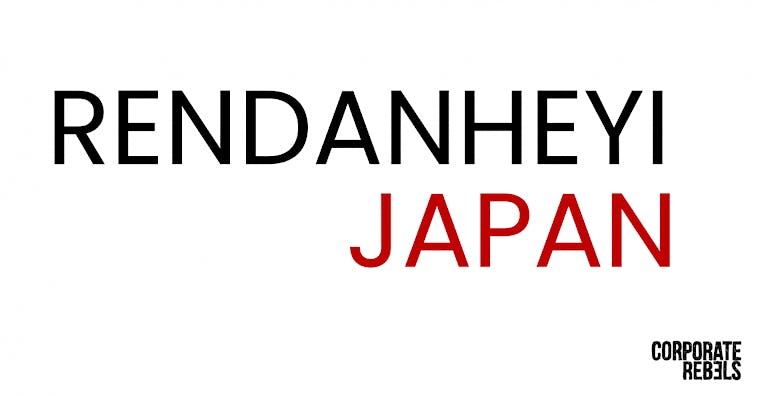Rendanheyi in Japan


This is an excerpt from our book titled 'Start-up Factory'
Gifts from Far-Off Places
“China did not have its own management models,” Zhang Ruimin, the founder Haier, told us, “we imported them. Now we should export our models to internationalise them.”
In 2012, Haier bought Sanyo, the Japanese white goods business that had become a household name — but suffered eight years of losses. It calls to mind the “stunned fish”, but things were different this time around. It was the start of another Haier-led transformation.
The former Sanyo staff were used to a strict workplace hierarchy; employees were hired to obey, not to take the initiative. When Haier came along, employees were encouraged to take ownership of their work, understand it in a different way, and heed user-needs.
Such fundamental changes do not come easily, and a shift of focus wasn’t enough. Sanyo’s existing model — especially the salary management system — conflicted with Haier’s. Staff compensation was based on seniority, rather than the customer-centric model. Instead of forcing its views on its new acquisition, Haier introduced them step-by-step.
Sanyo employees were used to 12 months’ salary and a four-month bonus. Haier adapted this to its own philosophy by aligning the automatic bonus with performance. For outstanding work, employees could receive more still. And performance, unsurprisingly, was judged according to customer satisfaction.
Slowly but surely, perceptions and mindsets began to shift. “The most important element of Sanyo is team spirit,” said Zhang. “We didn’t change that, only the direction — from following your boss to following users.”
Could the Japanese workers adapt? They could, and did. As one put it: “Before, we thought the company should take care of us; now, we take care of the company.”
The story of the Japanese Aqua microenterprise is illuminating. It is no longer in the business of selling washing machines but has established diverse laundry scenarios in partnership with thousands of cross-industry players. These include top name retailers allowing customers to do their laundry and shopping at the same place and the same time.
The microenterprise members, listening attentively to consumers, identified a need to wash large items (such as curtains and quilts) which are too heavy for standard home appliances. An investment of $500m addressed this opportunity and resulted in the development of commercial grade washing and drying facilities. Aqua continuously upgrades these machines and has introduced online functionality that allows customers to search for nearby stores, check their status, and make appointments.
Sanyo grew accustomed to Haier’s customer-orientation. It learned to transform the corporate culture into a more innovative and entrepreneurial one. The process took years. “It is difficult, but important, to integrate cultures,” Zhang Ruimin explained. “Many (changes) are not embraced by employees because they don’t match their company’s business models and there’s no correlation or interaction.”
This was the first success in introducing the Rendanheyi model to other countries, but more would follow. Haier subsequently purchased Fisher & Paykel Appliances, which operated globally from New Zealand. There, Haier could apply the lessons learned from the acquisition of Sanyo and apply a suitable strategy. “We didn’t want them to follow what we were doing in China. They had to figure it out for themselves,” said Zhang.
Want to learn more?
Haier is just one of the case studies contained in the extensive and immersive 6-week course from our Corporate Rebels Academy. Click here to learn more about what you will learn from the course and view answers to some frequently asked questions.

